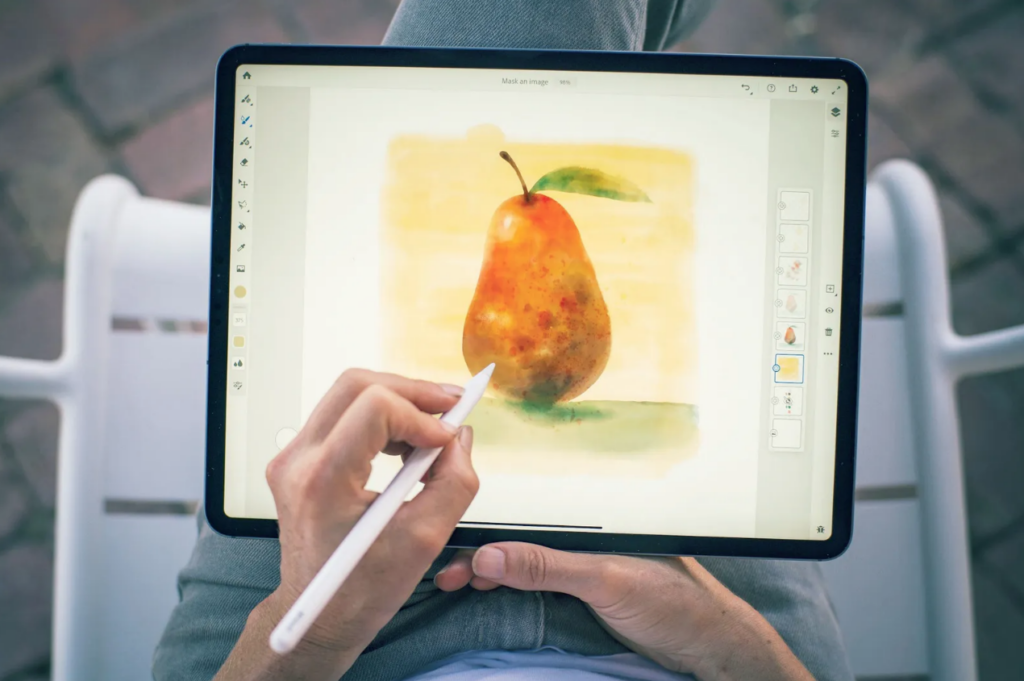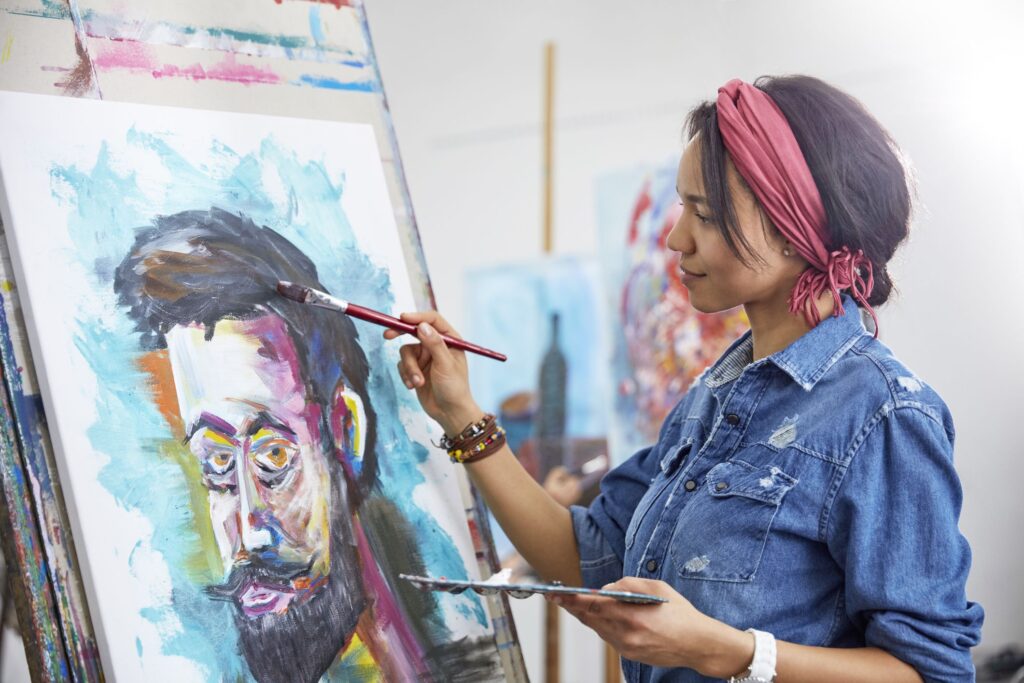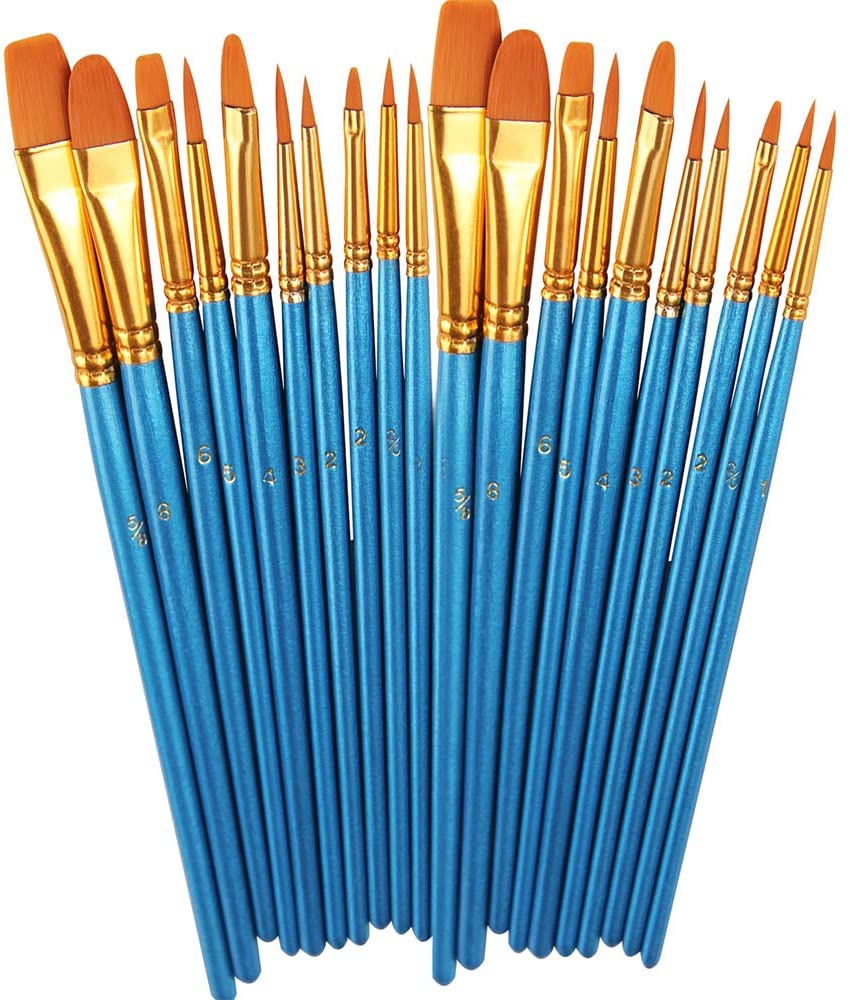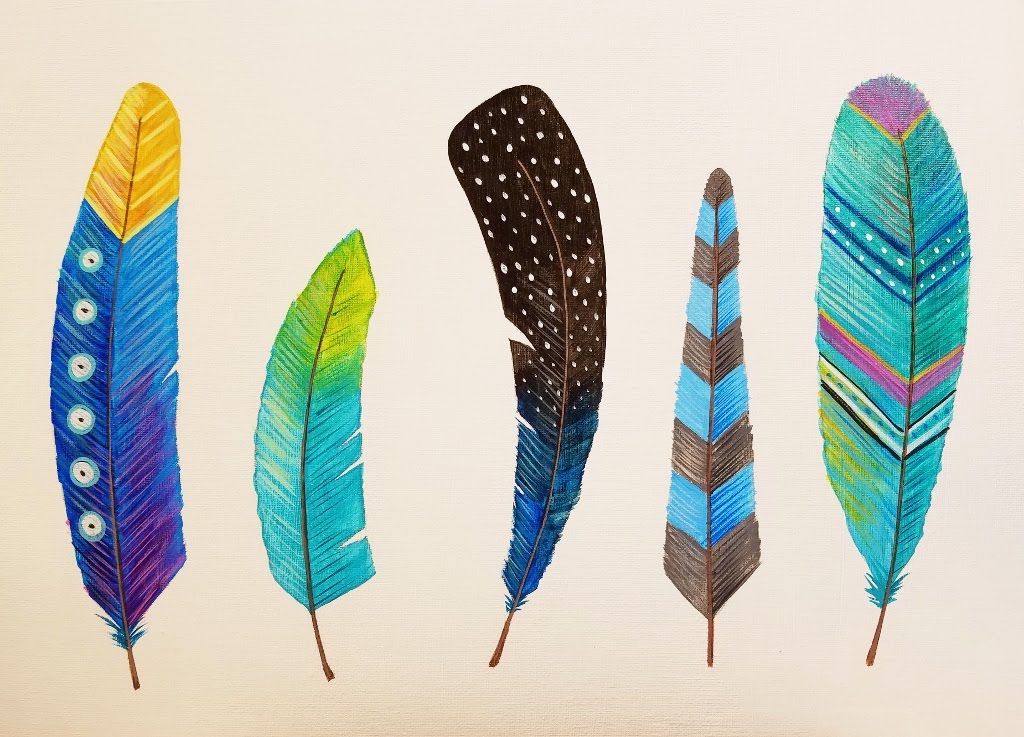
Q. What is Louis IX in Simone Martini’s “St. Louis of Toulouse” (1317) doing?
A. Crowning Robert of Anjou. Little is known of the life of artist Simone Martini (c. 1284 – c. 1344), but he is famed as a major figure in the development of early Italian painting. He is believed to have been a student of Duccio, one of the most influential artists of his day and the creator of the stunning Maesta altarpiece in the Museo dell’Opera del Duomo in Siena. Today the painting “St. Louis of Toulouse” can be visited in the Museo di Capodimonte, Naples.
Q. What is Joseph in the right wing of Robert Campin’s “Merode Altarpiece” (c. 1428) doing?
A. Making mouse-traps. Robert Campin (1375-1444) was the first great master of Early Netherlandish painting. The altarpiece can be seen at the Metropolitan Museum of Art, New York.
Q. What is the baby Jesus Christ in Jan van Eyck’s “Madonna with Canon van der Paele” (1436) doing?
A. Pinioning the wings of a green parakeet (which is a symbol of sin). Today this sumptuously detailed painting can be seen at the Groeningemuseum in Bruges, Belgium
Q. What is the archangel Michael in Rogier van der Weyden’s “Last Judgment” (1450) doing?
A. Weighing in his scales the souls of the Saved and the Damned. Today viewers can see this painting by Dutch Renaissance master van der Weyden at the Musee de l’Hotel Dieu, Beaune in France.
Q. What is Niccolo da Tolentino in Paolo Uccello’s “Rout of San Romano” (c. 1456) doing?
A. Directing the attack of Florentine forces against the Sienese on June 1, 1432. Niccolo da Tolentino (1350-1435) was an Italian condottiere, or mercenary. He was hired by many Italian lords and is famous for the many battles he won on their behalf; “Rout of San Romano” serves as a memory of his heroism. Today the riotous and colorful painting, in which Niccolo can be seen in the center in charge of the Florentine army, can be visited at the National Gallery, London.
Q. What are the angels in Andrea Mantegna’s “Agony in the Garden” (c. 1460) doing?
A. Holding the instruments of Christ’s Passion. The Passion represents the suffering of Jesus Christ in the hours surrounding his death by crucifixion. In Mantegna’s depiction, angels in the sky are bringing the Instruments of the Passion to Christ while he’s at prayer and while the disciples sleep. The instruments include the cross upon which Jesus is hung, the column where Jesus is whipped, the vessel with the vinegar offered to the Lord, the sponge soaked with vinegar offered to him, and the spear used to pierce his side. In the background Judas is coming with soldiers to arrest Christ. Today the painting can be seen at the National Gallery, London.
Q. What is Flora in Botticelli’s “Primavera” (1482) doing?
A. Strewing flowers from her gathered skirts. This lovely work shouldn’t be missed at the Uffizi in Florence.
Thank you for reading this article! If you have any further questions about this topic please contact us.









